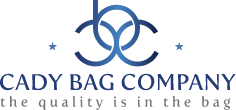No products in the cart.
Blog
Polypropylene Recycling Process: An Introduction
There’s a common thread running through automotive components, reusable containers of different types, plastic parts, packaging and labeling, loudspeakers, polymer banknotes, stationery, textiles, carpets, ropes, and thermal underwear. It is Polypropylene, abbreviated as PP. PP is a recyclable thermoplastic polymer widely used in these applications. Rugged and unaffected by different chemical solvents, acids, and bases, the PP recycling code is as per the type of resin used, as in the case of all plastic products – PP’s resin identification code is 5. The global demand for PP materials is quite high. Transparency Market Research has indicated that presently the PP market worldwide is valued at more than $80 billion. By 2023 it should touch $133.3 billion according to the research agency.
PP recycling is vital for the environment
Of all plastic packaging products in the United Kingdom and the United States, PP is the single most used plastic packaging, thanks to its melting point and strong bearing. In the year 2010 alone five billion pounds of PP was produced in the United States. Sadly though, it has been revealed by the American Chemistry Council that PP is one of the least recycled post-consumer plastics, at a rate of below 1 percent for post-consumer PP foam. And this is a bad thing for the environment.
PP has a short life, so most of these thermoplastics land in landfills to be wasted. Twenty percent approximately of solid waste produced comprises some form of plastic which includes PP according to the US Environmental Protection Agency. This PP contained solid waste degrades very slowly in landfills, about 20 to 30 years to be fully decomposed. Naturally, this poses a severe threat to the environment. Additives used in plastic products may contain toxins such as lead and cadmium. Cadmium contained in plastic products has the potential to permeate and can affect some bio-systems. If you burn thermoplastics like PP it can discharge toxins and vinyl chloride. Against this backdrop Recycling Polypropylene assumes importance.
The Polypropylene Recycling Process
The Polypropylene Recycling Process comprises the collection, sorting, cleaning, reprocessing by melting and then producing new products from the recycled PP.. The reprocessing by melting and then producing the new product from the recycled PP are important steps in the Polypropylene Recycling Process. In the reprocessing phase, collected PP products are fed into an extruder where it is melted at 4640F (2400C) and cut into granules. The pellets are then ready to be used in the production of new products. Current technologies enable the melting of PP and its usage in the production of new items.
The power of Polypropylene
Polypropylene produces less solid waste by weight than PET, PS or PVC. Thus many recycling applications exist for Polypropylene: battery cases, paint cans, home storage, flower pots, pallets, crates, composite lumber, and more. In the US, out of the 51 largest US municipalities of the state, 44 collect polypropylene.
Polypropylene and high-density polyethylene (HDPE) produce significantly less CO2 equivalents by weight than PET, PS, and PVC. And Polypropylene parts can be 100% recycled for various useful purposes. A market for recycled PP (rPP) exists in an extensive range of products such as automotive applications, buckets, caps and closures, garden furniture, pallets, pipes, and more.
The Environmental Benefits of Recycling PP
When PP is recycled, there is a reduction in the consumption of raw, finite resources, such as oil and propane gas. Around 8% of the oil used worldwide (around 400 million tons) is implemented in the traditional methods of plastic production with 4% as ‘feedstock’ and another 4% in manufacturing. There is also an 88% reduction in energy usage if plastic is produced from plastic. So plastic to plastic recycling is environmentally friendly.
Given its inherent flexibility, PP can be recycled back into many different products, including clothing fibers, industrial fibres, food containers, dishware etc.
Cady Bag
Cady Bag understands and is focused on recycled packaging. The company is a vertically integrated manufacturer of flexible packaging and fabrics for niche markets. Our focus is on quality deliverables enabled by our empowered employees.

